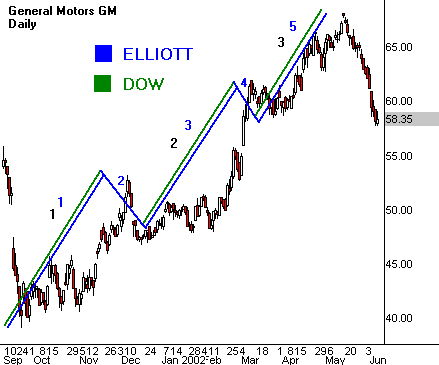Elliot Wave Theory
Post on: 16 Март, 2015 No Comment

Bhavishya- Elliot Wave Theory
January 9, 2009
The Elliott Wave theory is based on how groups of people behave. Mass psychology with swings from pessimism to optimism and back is described as the basis for the patterns the Elliott wave is suppose to identify.The Elliott Wave Principle is named after Ralph Nelson Elliott who did most of his work on wave patterns in the1930s and 1940s. Mr. Elliott contends that social, or crowd behavior trends can be recognized in the price trend activity in the financial markets.
Elliott came up with thirteen patterns or waves, that he suggested recur in the markets. Linking those waves together he suggested helps to identify larger versions of those same patterns that occur over longer periods of time.The basic patterns in Elliotts theory is what is known as impulsive waves and corrective waves. An impulsive wave is made up of five sub waves and moves in the same direction as the larger price trend.
A corrective wave is made up of three sub waves and moves against the trend of the next larger size. For a more in-depth discussion on the Elliott Wave patterns there are many books available on the topic including Elliott Wave Principle, by A.J. Frost and Robert Prechter.
The Elliott Wave principles have a strict definition for what ultimately proves to be a valid wave formation and therefore should be understood and used carefully as confirming evidence in making trading decisions.The principles are meant to indicate potential, or probabilities of possible future price action in the market.
Some wave patterns have lower probabilities of giving indication of future price action than others and strongly bias the investor to understand the principles behind the theory first before interpreting market action based on wave analysis.
Elliott believed that the number of waves that exist in the stock markets pattern is reflected in the Fibonacci sequence of numbers. Fibonacci numbers are intriguing in that any number is approximately 1.618 times the preceding number and approximately 0.618 the following number.
There is a good resource for further investigation of Fibonacci numbers written by Edward Dobson called Understanding Fibonacci Numbers.
Generally, the Elliott wave theory says that market price moves in recurring wave patterns.Small wave formations link together to form larger wave formations. There is some value in being aware of the theory and knowing how to apply the theory to financial markets.
In certain instances, the small corrective waves, labeled with the letters A, B and C, can be identified quite clearly especially after secondary corrections in the overall markets. Usually the price action between A and B is a period of expanding volume.
The price action between B and C often form with diminishing volume and after C, price is said to have broken out of the pattern and is usually accompanied by increasing volume. This is sometimes the start of the next primary swing in prices.














